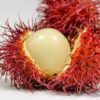No products in the cart.

Firstly, introducing Auscrops, a wonderful market vending company bridging farmers and customers together through market vendors. Click here to find out more about Nasturtium as well fruit and vegetable offers.
Nasturtium – Appearance & History
Nasturtiums are flowering plants that have been cultivated since ancient times. They are commonly used as ornamental plants, but they also provide many culinary and medicinal benefits. In this blog post, we will discuss the information and facts that you need to know about nasturtiums. We will cover topics such as their appearance, history, uses, and nutrition facts.
Appearance
Nasturtiums belong to the genus Tropaeolum in the family Tropaeolaceae. They are usually annual plants that grow up to 1-3 feet tall with bright orange or yellow flowers. Some varieties of nasturtium can even produce a pleasant scent. Their leaves rounded and waxy with a spicy flavor similar to watercress or arugula. The stems often covered in long hairs which can help protect them from pests and diseases.
History
Nasturtiums were first cultivated by the Aztecs in Mexico around 2000 BC for their medicinal properties. Later on, brought to Europe where they gained popularity due to their bright colors and unique aroma. Today, nasturtiums grown worldwide for both ornamental and culinary purposes.
Uses of Nasturtium
Nasturtiums eaten raw or cooked in a variety of dishes such as salads, soups, sandwiches, and stir-fries. Also used to make infused oils or vinegars which can add a unique flavor to your meals. Additionally, nasturtium has antiseptic properties which can help fight off infections when applied topically on cuts or burns. Also believed to have anti-inflammatory properties which can help reduce swelling and pain caused by arthritis or other joint conditions. Lastly, nasturtium extract known for its ability to boost the immune system as well as its antioxidant activity which may help prevent cancer cell growth.
Nutrition Facts of Nasturitum
Nasturitums contain high levels of Vitamin C at 15-25 mg per 100g serving size (3). They also contain essential minerals such as calcium (10mg/100g), magnesium (15mg/100g), phosphorus (12mg/100g), potassium (180mg/100g) and zinc (1mg/100g). Additionally, natsutrium contains lutein and beta carotene which act as antioxidants that may protect against cancer cell growth (4). Lastly, it contains dietary fiber which helps promote healthy digestion and regular bowel movements (5).
Conclusion:
Natsutrium is an incredibly versatile plant with a rich history stretching back centuries ago when it was first cultivated by the Aztecs for medicinal purposes.. Today widely used for both ornamental and culinary purposes due its colorful appearance and unique flavor profiles ranging from sweet & spicy to tart & tangy.
Click here to read similar articles.
 Français
Français 










